Our summer unofficially kicked off with Memorial Day weekend. What better way to start the season than to spend some time outdoors and do a little gardening?
Plant some new water efficient plants for color and to attract hummingbirds and butterflies. Afterwards spread fresh bark or compost to mulch the soil. This insulates and protects shallow roots from the heat of the summer sun. While keeping the soil cool, mulch slows the evaporations of water from the soil so it stays moist.
Some of my favorite plants are survivors– easy to grow with minimal water use once established while also attracting hummingbirds and butterflies to the garden.
Ceanothus is one plant that does it all. Brilliant blue or stark white flowers in spring provide nectar for both hummers and butterflies. Ceanothus also provide food for butterfly larvae. A new ground cover variety with gold and deep green variegated foliage can bring color to the garden year round. Growing 3-5 feet wide and 2 feet tall this perennial can survive with only occasional summer water.
Everyone should have some lavender in their garden. Hummingbirds and butterflies both favor this plant and there are new introductions every year from growers. Elegan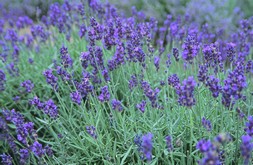
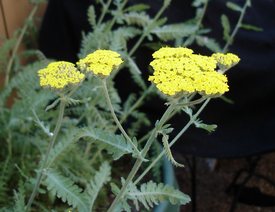 ce Purple forms a bushy compact mound with sensational purple flowers in early sumer. Goodwin Creek is an old stand-by that blooms from spring to late fall with deep violet blue flowers. For midsummer bloom plant Grosso which is a widely planted commercial variety in France and Italy. It’s possibly the most fragrant lavandin or all. Spanish lavender blooms spring into summer if sheared. By planting an assortment of lavenders you can have a succession of flowers throughout the season.
ce Purple forms a bushy compact mound with sensational purple flowers in early sumer. Goodwin Creek is an old stand-by that blooms from spring to late fall with deep violet blue flowers. For midsummer bloom plant Grosso which is a widely planted commercial variety in France and Italy. It’s possibly the most fragrant lavandin or all. Spanish lavender blooms spring into summer if sheared. By planting an assortment of lavenders you can have a succession of flowers throughout the season.
Penstemon also lure hummingbirds and butterflies to the garden. They come in a wide range of colors and varieties from native species to garden hybrids. Another long blooming, tough plant is achillea Moonshine (yarrow). Butterflies love to alight on their yellow flat landing pads. The dense flower clusters make good cut flowers and the gray-green foliage blends with all color in the garden. Yarrow need only routine care once established. They can take some watering although they endure drought once established. Cut them back after bloom and divide when clumps get crowded.
There are so many salvias to choose from and all are great additions to a tough love garden. Autumn sage blooms summer through fall in colors ranging from deep purple through true red to rose, pink and white. Purple Pastel is especially beautiful covering 3-4 foot plants with blossoms filled with nectar for hummingbirds and butterflies.
Those who seek true blue flowers for their gardens might try planting salvia chamaedryoides. This elegant front-of-the-border plant has silvery foliage which sets off the brilliant blue flowers. Heaviest bloom is in late spring and fall. Deadheading encourages rebloom. This salvia is drought tolerant but blooms longer and better with a little summer water.
Three more un-thirsty bloomers that even beginner gardens can’t kill are . All attract hummingbirds. Coreopsis also make good cut flowers.

 he top ten roses of the workls and the best landscpe white around. It also comes as a climber. Honey scented rose clusters are borne in great profusion. This rose is extremely disease resistant and needs little care. Looks great as a hedge or in mass plantings. This the the part I love, they have very few thorns.
he top ten roses of the workls and the best landscpe white around. It also comes as a climber. Honey scented rose clusters are borne in great profusion. This rose is extremely disease resistant and needs little care. Looks great as a hedge or in mass plantings. This the the part I love, they have very few thorns.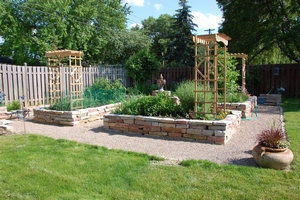
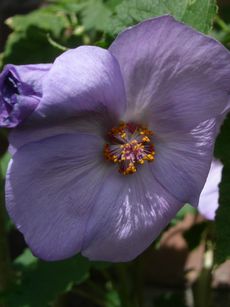
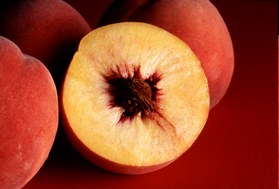 available for smaller yards and containers. Here are some good ones to try.
available for smaller yards and containers. Here are some good ones to try.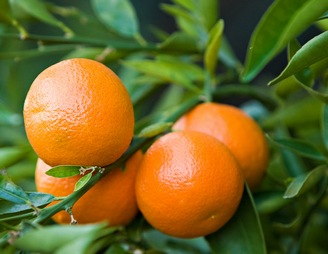 p your landscape? Plant a dwarf citrus. They grow to only 8 feet so fit into small spaces. Plant in a spot that gets full sun and has well drained soil. Citrus are slow growing and do great in containers, too.
p your landscape? Plant a dwarf citrus. They grow to only 8 feet so fit into small spaces. Plant in a spot that gets full sun and has well drained soil. Citrus are slow growing and do great in containers, too.